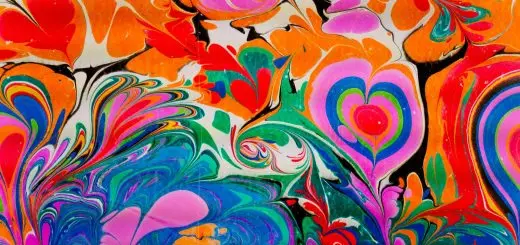Feng Shui: Energy Flow in Spaces

Looking for more amazing products? Check out our online store and explore our collection here! Happy shopping!
Before diving in, please note: This post is for informational purposes only. If you’d like to know more about how we approach topics, feel free to check out our friendly Disclaimer Page.
Hey there, amazing readers! 
We’re committed to delivering quality posts, and your support (even just sticking around despite the ads) means everything to us. So, bear with us, and thanks for helping us keep the good vibes rolling. Now, on to the fun stuff!
TRANSLATE BUTTON AT THE END OF THE ARTICLE
Introduction to Feng Shui Principles
Feng Shui is an ancient Chinese practice that focuses on creating harmony between individuals and their environments.
The principles of Feng Shui revolve around the concept of energy flow, known as Chi, which is believed to permeate all living things.
By understanding and applying these principles, one can create spaces that promote positive energy and well-being.
The practice of Feng Shui dates back thousands of years and has been used to design homes, offices, and even cities.
It is based on the idea that the arrangement of objects and spaces can impact the flow of energy and influence various aspects of life, such as health, wealth, and relationships.
By following the guidelines of Feng Shui, one can create spaces that feel balanced, harmonious, and energizing.
Understanding Chi and Energy Flow
Chi is the life force that flows through all living things, including humans, animals, and plants.
In Feng Shui, Chi is believed to be influenced by the arrangement of objects, the layout of a space, and the quality of the environment.
By understanding how Chi moves through a space, one can make adjustments to enhance the flow of energy and promote a sense of well-being.
Energy flow in Feng Shui is all about creating a balance between Yin and Yang energies.
Yin represents stillness, darkness, and femininity, while Yang represents movement, light, and masculinity.
A harmonious space incorporates both Yin and Yang elements to create a sense of equilibrium and flow.
By balancing these energies, one can create spaces that feel peaceful, inviting, and conducive to positive energy.
Importance of Balance in Spaces
Balance is a key principle in Feng Shui design.
Creating a sense of balance in a space involves arranging objects, furniture, and decor in a way that feels visually and energetically harmonious.
When a space is balanced, Chi can flow freely, promoting a sense of peace and well-being.
In Feng Shui, balance is not just about symmetry but also about creating a sense of flow and movement.
By incorporating a mix of shapes, colors, textures, and elements, one can create a dynamic and engaging space that supports the free flow of energy.
Balancing different elements in a space can help create a sense of harmony and unity.
Elements of Feng Shui Design
Feng Shui design incorporates five elements: Wood, Fire, Earth, Metal, and Water.
Each element is associated with specific qualities and energies that can be used to enhance different areas of life.
By incorporating these elements into a space, one can create a sense of balance and harmony that promotes positive energy flow.
Wood represents growth, vitality, and flexibility.
Fire symbolizes passion, energy, and transformation.
Earth signifies stability, nourishment, and grounding.
Metal embodies clarity, precision, and strength.
Water represents flow, intuition, and abundance.
By incorporating these elements into a space, one can create a well-rounded environment that supports different aspects of life.
Creating Harmonious Environments
Creating a harmonious environment in Feng Shui involves paying attention to the layout, colors, textures, and materials used in a space.
By selecting objects and decor that resonate with the desired energy, one can create a space that feels balanced, inviting, and supportive.
A harmonious environment promotes a sense of well-being and positivity.
Harmony in Feng Shui design is about creating a sense of unity and coherence.
By arranging objects in a purposeful and intentional way, one can create a space that feels cohesive and harmonious.
Paying attention to details such as lighting, furniture placement, and decor can help enhance the overall energy flow in a space and create a sense of harmony.
Enhancing Positive Energy Flow
Enhancing positive energy flow in a space involves creating an environment that feels uplifting, energizing, and supportive.
By incorporating elements that promote the free flow of Chi, one can create a space that feels vibrant and alive.
Enhancing positive energy flow can help improve mood, productivity, and overall well-being.
One way to enhance positive energy flow is by decluttering and organizing a space.
Clutter can block the flow of Chi and create stagnant energy, leading to feelings of stress and overwhelm.
By clearing out unnecessary items and creating a sense of openness, one can create a space that feels light, airy, and full of positive energy.
Feng Shui Tips for Home and Office
Incorporating Feng Shui principles into your home or office can help create spaces that feel balanced, harmonious, and energizing.
Here are some tips for applying Feng Shui in your environment:
Keep the entrance to your home or office clutter-free and welcoming to invite positive energy.
Use mirrors to reflect light and energy throughout a space, creating a sense of expansiveness and vitality.
Incorporate plants and natural elements to bring the energy of nature indoors and promote a sense of well-being.
Position furniture in a way that promotes the free flow of energy and allows for easy movement through a space.
Use color and light strategically to create a sense of balance and harmony in your environment.
Utilizing Color and Light in Design
Color and light play a crucial role in Feng Shui design.
Different colors and lighting can influence the energy of a space, affecting mood, productivity, and overall well-being.
By utilizing color and light strategically, one can create a space that feels vibrant, balanced, and harmonious.
Warm colors like red, orange, and yellow are associated with energy, passion, and creativity.
Cool colors like blue, green, and purple are linked to relaxation, tranquility, and harmony.
By incorporating a mix of colors that resonate with the desired energy, one can create a visually stimulating and energetically supportive environment.
Arranging Furniture for Energy Flow
The arrangement of furniture in a space can impact the flow of energy and influence the overall feel of a room.
By arranging furniture in a way that promotes the free flow of Chi, one can create a space that feels open, inviting, and harmonious.
Furniture placement is essential in creating a balanced and energetically supportive environment.
When arranging furniture, consider the principles of Feng Shui, such as creating pathways for energy to flow freely and avoiding blocking Chi with large pieces of furniture.
Position furniture in a way that promotes conversation and interaction, creating a sense of community and connection in a space.
By arranging furniture thoughtfully, one can enhance the energy flow and create a space that feels welcoming and energizing.
Clearing Clutter for Better Chi
Clutter is one of the biggest obstacles to positive energy flow in a space.
Clutter can block the flow of Chi, create stagnant energy, and lead to feelings of stress and overwhelm.
By clearing clutter and organizing a space, one can create an environment that feels light, airy, and full of positive energy.
Clearing clutter is essential for creating a harmonious and energetically supportive space.
To clear clutter in a space, start by decluttering one area at a time, sorting items into categories, and letting go of things that no longer serve a purpose.
Organize belongings in a way that is visually pleasing and makes it easy to find what you need.
By creating a sense of openness and order, one can create a space that feels balanced, harmonious, and full of positive energy.
Incorporating Nature Indoors
Bringing the energy of nature indoors is a core principle of Feng Shui design.
By incorporating plants, natural materials, and elements from the natural world, one can create a space that feels vibrant, balanced, and harmonious.
Nature has a calming and energizing effect on a space, promoting a sense of well-being and vitality.
Plants are one of the easiest ways to bring nature indoors and enhance the energy of a space.
Plants not only add beauty and color to a room but also purify the air, reduce stress, and promote a sense of relaxation.
Incorporating natural materials like wood, stone, and water can also help create a sense of connection to the natural world and enhance the overall energy flow in a space.
The Benefits of Feng Shui Practices
Practicing Feng Shui can have a range of benefits for individuals and their environments.
By creating spaces that feel balanced, harmonious, and energizing, one can experience improved mood, productivity, and overall well-being.
The benefits of Feng Shui practices extend beyond just the physical environment and can impact various aspects of life.
Some of the benefits of Feng Shui practices include:
Improved energy and vitality
Increased focus and productivity
Enhanced mood and emotional well-being
Better relationships and communication
Greater sense of peace and harmony
By incorporating Feng Shui principles into your home or office, you can create spaces that support your well-being and enhance the quality of your life.
Whether you are looking to improve your health, increase your wealth, or strengthen your relationships, Feng Shui practices can help create environments that promote positive energy flow and overall happiness.
Conclusion
In conclusion, Feng Shui is a powerful practice that focuses on creating harmony between individuals and their environments.
By understanding the principles of Chi and energy flow, one can design spaces that feel balanced, harmonious, and energizing.
By incorporating elements of Feng Shui design, such as balance, harmony, and nature, one can create environments that support well-being and positivity.
Whether you are looking to create a harmonious home or a productive office space, Feng Shui practices can help enhance the energy flow and improve various aspects of life.
Embracing the principles of Feng Shui can lead to a more balanced, harmonious, and fulfilling life.

The Enlightenment Journey is a remarkable collection of writings authored by a distinguished group of experts in the fields of spirituality, new age, and esoteric knowledge.
This anthology features a diverse assembly of well-experienced authors who bring their profound insights and credible perspectives to the forefront.
Each contributor possesses a wealth of knowledge and wisdom, making them authorities in their respective domains.
Together, they offer readers a transformative journey into the realms of spiritual growth, self-discovery, and esoteric enlightenment.
The Enlightenment Journey is a testament to the collective expertise of these luminaries, providing readers with a rich tapestry of ideas and information to illuminate their spiritual path.
Our Diverse Expertise
While our primary focus is on spirituality and esotericism, we are equally passionate about exploring a wide range of other topics and niches 

To ensure we provide the most accurate and valuable insights, we collaborate with trusted experts in their respective domains 
Our blog originally focused on spirituality and metaphysics, but we’ve since expanded to cover a wide range of niches. Don’t worry—we continue to publish a lot of articles on spirituality! Frequently visit our blog to explore our diverse content and stay tuned for more insightful reads.
Hey there, amazing reader! 
Check out our store here and take a peek at some of our featured products below! Thanks for being awesome!










